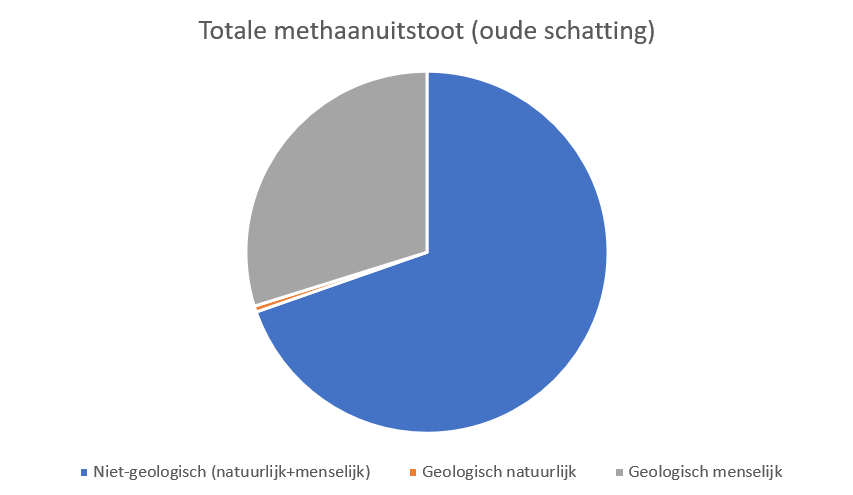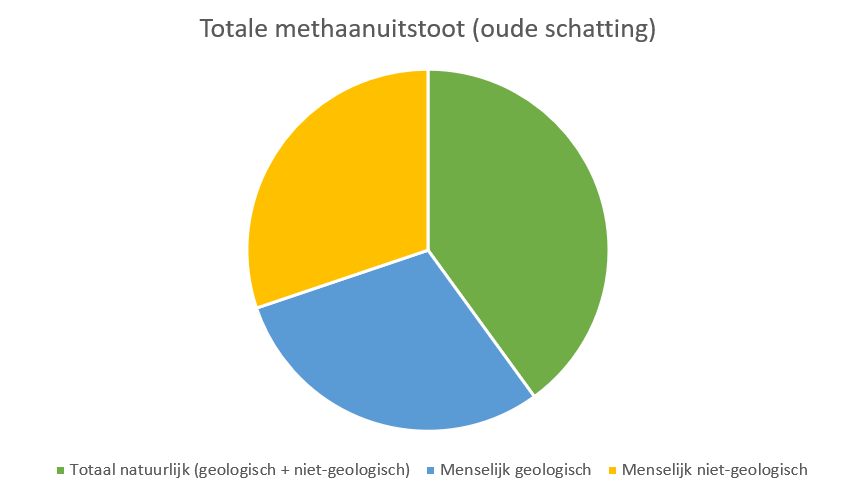Geological methane sources can be either anthropogenic or natural, such as the oil industry or mud volcanoes. Ground-based measurements combined with TROPOMI observations on the Javanese mud volcano Lusi now show that the natural geological emissions are probably higher than expected. It would mean that we have to attribute a smaller share to man-made geological sources. On the other hand, other human activities should be held accountable for higher emissions, such as rice fields and livestock farming. Publication in Nature’s Scientific Reports.
After carbon dioxide, methane has the largest share in our unintentional amplification of the greenhouse effect. In this day and age, human activities and natural processes collectively emit 560 million tons of methane per year. Back when nature still had a monopoly on methane emissions, they were at 40% of the current level, around 250 million tons, as can be deduced from air bubbles trapped in ancient ice at the poles. Humans emit methane through, for example, rice fields, livestock farming, waste processing and geological sources such as oil extraction. Natural sources include swamps, the seabed and geological sources such as mud volcanoes.

Geological methane
Geological methane can be distinguished from general methane due to a lack of C14 isotopes. So the total geological emissions, human plus natural, is known. Scientists are therefore interested in mud volcanoes, because with a simple subtraction you can also learn more about methane emissions from the oil industry. Estimates of natural geological emissions have long been around 30-75 million tons per year. But recent C14 measurements in pre-industrial air bubbles in ice provide estimates of 0.1 to 5.4 million tons. So it would only account for a tiny portion of the 170 million tons of natural emissions in total.

a single mud volcano already reaches the lower limit
An international research team has now used the Dutch TROPOMI space instrument to determine that a single mud volcano already reaches the lower limit of estimates for the entire Earth—0.1 million tons. Admittedly, we are talking about the largest in the world, Lusi on Java, but given the number of mud volcanoes on Earth, natural geological sources are back on the table as a substantial source of methane. ‘It raises the question whether something went wrong with the pre-industrial C14 measurements,’ says Sander Houweling, member of the TROPOMI team and affiliated with SRON Netherlands Institute for Space Research and Vrije Universiteit Amsterdam. ‘Depending on the outcome, emissions from the oil industry will be higher or lower.’ Because the total anthropogenic emissions are known fairly accurately, this also has consequences for the emissions that we attribute to other human activities such as rice fields, livestock farming and waste processing.
comparing ground-based and satellite measurements
The study is a collaboration between the TROPOMI team, who collected data from space, and scientists who carried out measurements on the island of Java itself. Houweling: ‘That way we can compare ground-based and satellite measurements. The results of both studies are in agreement, so we can draw a reliable conclusion. Measurements from the ground and from space rely on two completely different methods, and still appear to arrive at the same answer within uncertainties. Chances of that happening by accident are very small.’
Publication
Adriano Mazzini, Alessandra Sciarra, Giuseppe Etiope, Pankaj Sadavarte, Sander Houweling, Sudhanshu Pandey & Alwi Husein, ‘Relevant methane emission to the atmosphere from a geological gas manifestation’, Nature’s Scientific Reports



